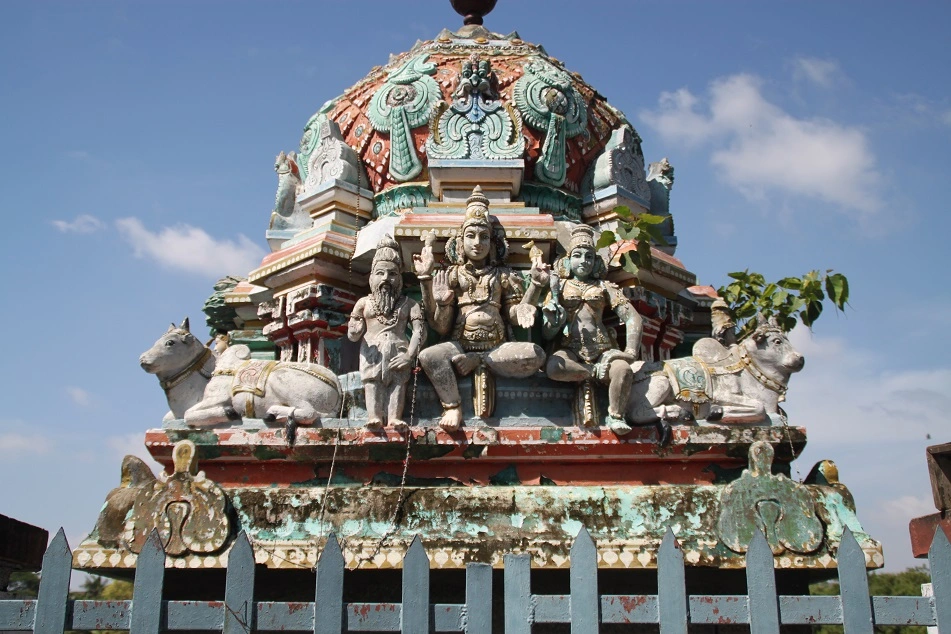My first encounter with Chennai was a symphony for the senses – a vibrant tapestry woven with the scent of jasmine and filter coffee, the cacophony of auto-rickshaw horns, and the dazzling kaleidoscope of silk sarees. Often dubbed the “Gateway to South India,” Chennai, formerly Madras, is a city that pulses with an ancient soul, yet embraces a dynamic modernity. It’s a place where history whispers from every temple pillar, and the future gleams in the glass facades of its tech parks. For a traveller from the UK or US, it’s an immersive dive into a culture that is both profoundly different and wonderfully welcoming.
I landed in Chennai in what is arguably the best time to visit – the winter months between November and February. The air, though still warm, was blessedly free from the intense humidity of summer, making exploration a joy. This is also when the city truly comes alive with its famous Music and Dance Season, a cultural phenomenon that fills the air with the strains of Carnatic music and the rhythmic beauty of Bharatanatyam. While I didn’t plan my trip specifically around this, the underlying cultural vibrancy was palpable everywhere.
Stepping Back in Time: Temples and Colonial Echoes
My journey began in the heart of Mylapore, one of Chennai’s oldest and most culturally rich neighbourhoods. The Kapaleeshwarar Temple was my first stop, and it utterly mesmerised me. This ancient Dravidian architectural marvel, dedicated to Lord Shiva, is a riot of colour and intricate carvings, its towering gopuram (entrance tower) adorned with a bewildering array of deities. Walking barefoot across its cool stone floors, surrounded by devotees, the scent of incense, and the chanting of prayers, felt like stepping into a living, breathing testament to centuries of faith. The sheer artistry in every detail, from the sculpted deities to the painted ceilings, demands slow, appreciative observation.
Just a short distance away lies the San Thome Basilica, a striking contrast built in neo-Gothic style. This Roman Catholic church stands on what is believed to be the tomb of Saint Thomas the Apostle, one of the twelve disciples of Jesus Christ. The peaceful serenity inside, coupled with its fascinating history, offered a moment of quiet reflection amidst the city’s bustle. It’s a powerful reminder of Chennai’s diverse historical layers, influenced by ancient Tamil kingdoms, colonial powers, and various religious traditions.
No historical tour of Chennai is complete without a visit to Fort St. George. This imposing fortress, built by the British East India Company in the 17th century, marked the very genesis of modern Chennai. Exploring its grounds, I walked through the Fort Museum, which houses fascinating artefacts from the British Raj, including old uniforms, weaponry, and portraits. St. Mary’s Church, the oldest Anglican church in India, stands proudly within the fort walls, its colonial charm still palpable. It offers a tangible link to Chennai’s past as a crucial trading post and administrative centre under British rule.
A Culinary Odyssey: The Soul of South Indian Flavours
You simply cannot visit Chennai without embarking on a full-blown culinary adventure. South Indian cuisine is a world unto itself, distinct from its northern counterparts, with a rich emphasis on rice, lentils, fresh vegetables, coconut, and a vibrant palette of spices.
My mornings quickly fell into a delightful rhythm: a plate of fluffy Idlis (steamed rice cakes) and crispy Vadas (savoury lentil doughnuts), both swimming in a bowl of aromatic Sambar (a tangy lentil and vegetable stew) and accompanied by fresh coconut and tomato chutneys. And, of course, the quintessential Filter Coffee – strong, frothy, and served in a traditional dabarah and tumbler – a perfect kickstart to any day.
Lunch often meant a traditional “meal” served on a fresh banana leaf – an experience in itself. A mound of rice at the centre, surrounded by a colourful array of vegetable curries, poriyal (stir-fried vegetables), rasam (a thin, peppery soup), and pappadums. The art of mixing and eating with your hand, truly engaging all senses, is an essential part of the experience.
Evenings were for street food discoveries. I devoured a buttery Masala Dosa, a thin, crispy crepe wrapped around a spiced potato filling, served piping hot from a roadside stall. The humble Sundal, a street snack of boiled chickpeas tossed with spices and shredded coconut, became a surprisingly addictive treat. And for something fiery, Chicken Chettinad proved to be an explosion of flavour, showcasing the robust spices of the Chettinad region. For a sweet reprieve from the heat, the icy Jigarthanda, a Madurai speciality made with almond resin, milk, and ice cream, was an absolute revelation. Chennai’s food scene is not just about sustenance; it’s a profound cultural immersion.
Beaches, Arts, and Unexpected Delights
Chennai’s coastline offers a refreshing escape from the city’s interior. Marina Beach, stretching for kilometres, is one of the longest urban beaches in the world. While not ideal for swimming, it’s a bustling spectacle, especially in the evenings, with food stalls, vendors, and families enjoying the sea breeze. For a slightly quieter vibe, Elliot’s Beach (or Besant Nagar Beach, affectionately known as “Bessie”) offers a more relaxed atmosphere, popular with locals and a great spot for an evening stroll.
For those interested in the performing arts, a visit to the Kalakshetra Foundation is a must. This renowned institution is dedicated to preserving and promoting traditional Indian arts, particularly Bharatanatyam dance and Carnatic music. Even if you can’t catch a performance, exploring its serene campus gives you a sense of the profound dedication to these art forms.
And for an escape from the city, a day trip to Mahabalipuram (Mamallapuram), a UNESCO World Heritage site, is absolutely essential. Located about an hour’s drive south of Chennai, this ancient port town is famed for its incredible rock-cut temples and monolithic sculptures from the Pallava dynasty. The iconic Shore Temple, standing majestically by the sea, and the Five Rathas, monolithic temples carved in the shape of chariots, are breathtaking examples of ancient Indian artistry. The famous ‘Krishna’s Butterball,’ a massive balancing rock, adds a touch of playful wonder to the historical marvels.
Reflecting on a City of Contrasts
Chennai is a city that defies simple categorisation. It’s a place where ancient traditions coexist seamlessly with modern aspirations, where the spiritual and the commercial intertwine. It’s a city that can be overwhelming at first glance, but incredibly rewarding for those willing to peel back its layers.
My trip to Chennai wasn’t just a holiday; it was an education. It was an opportunity to connect with a vibrant culture, to taste new flavours, and to witness the enduring spirit of a city that has preserved its heritage while confidently stepping into the future. For any traveller seeking an authentic, sensory-rich experience in India, Chennai offers an unforgettable adventure that will leave you with a deeper appreciation for its unique charm and indelible warmth.



